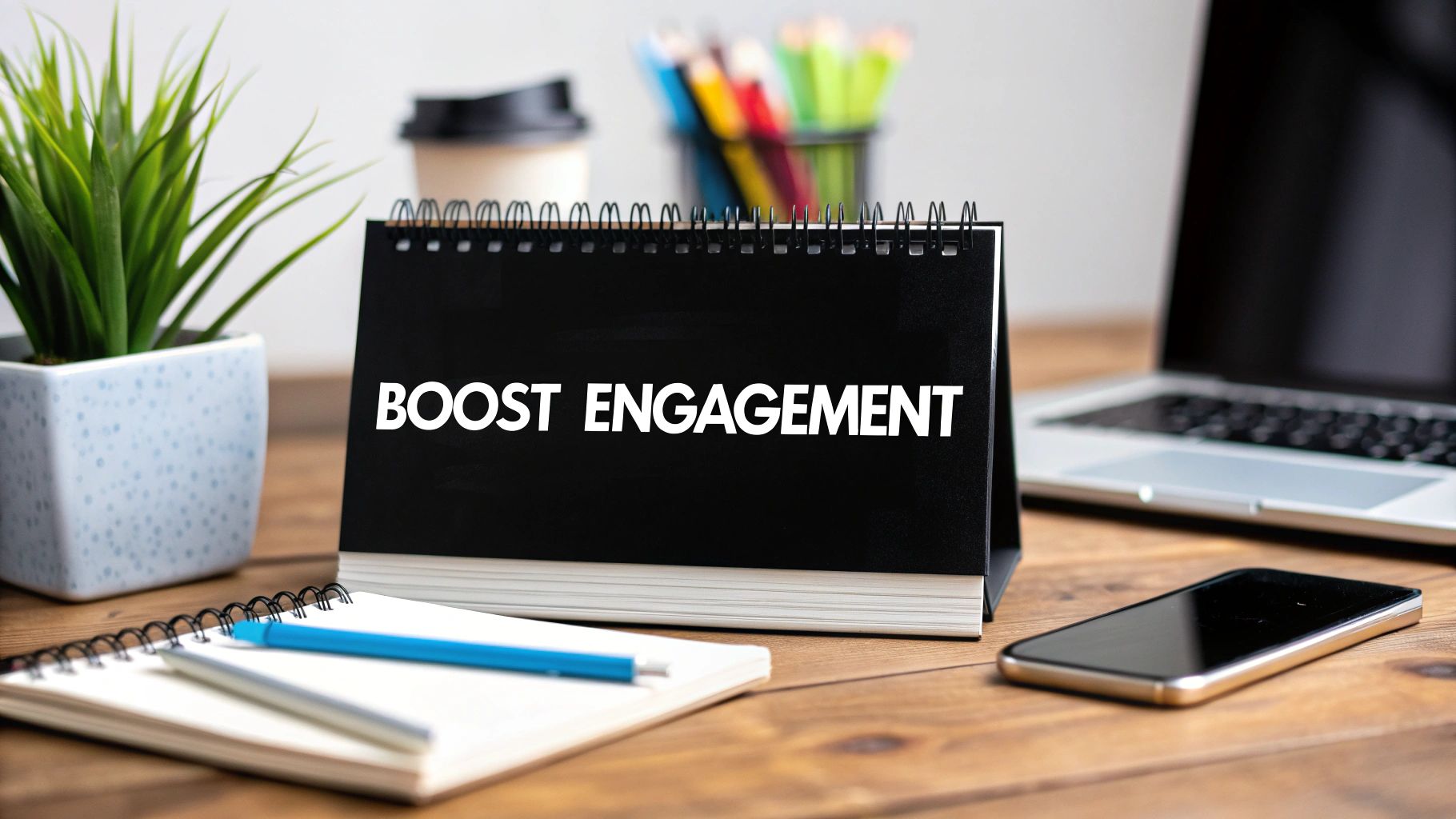
Linkedin Content Calendar: Boost Engagement
Published on 2025-04-14
Why Strategic Content Calendars Transform LinkedIn Results
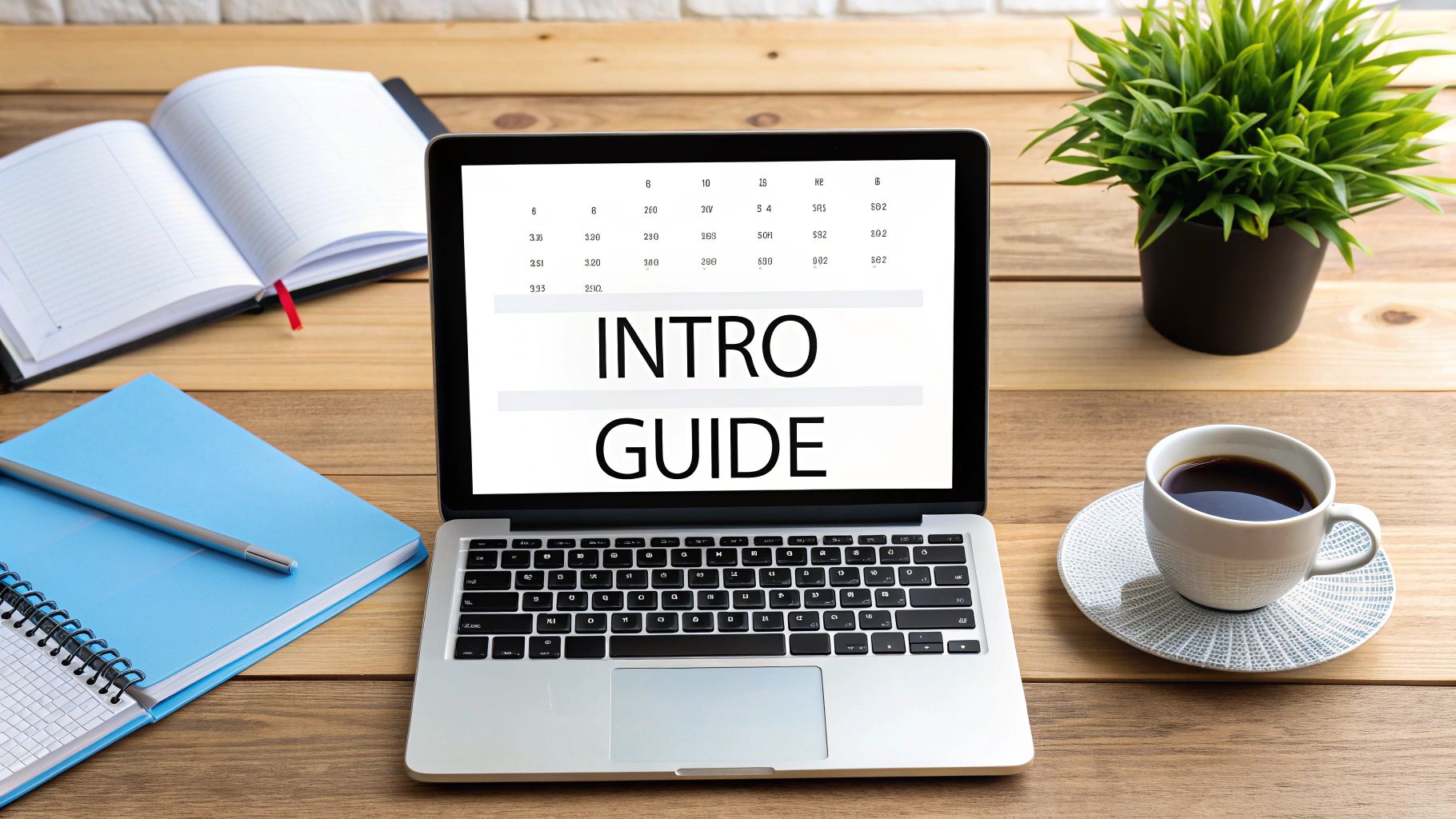
Posting randomly on LinkedIn rarely delivers the desired outcomes. A content calendar helps shift from reactive posting to a proactive LinkedIn strategy. Think of it as a roadmap for your content, ensuring it aligns with your business goals. This structured approach helps transform a LinkedIn presence into a powerful tool for growth and engagement.
Imagine building a house without blueprints – chaotic, right? A LinkedIn strategy without a content calendar is similar. It lacks direction and focus. A content calendar empowers you to anticipate, plan, and execute a content strategy built for results. You can measure what works, adapt to changes, and achieve your LinkedIn goals.
An effective LinkedIn content calendar is essential for maximizing your digital presence. Start by defining clear goals. This ensures your content aligns with objectives like attracting leads, networking, or building your personal brand. A well-structured calendar fosters consistency and engagement—key for LinkedIn visibility. Using scheduling tools allows you to plan posts in advance, track performance, and free up time for other tasks. This streamlines content creation and enhances the impact of posts by optimizing publishing times to reach a wider audience. Learn more about building a LinkedIn content calendar here: How to create a LinkedIn content calendar. For further content strategies, check out: How to master content creation.
The Benefits of a Structured Approach
Many successful LinkedIn users attribute their achievements to a calendar-driven content strategy. They understand that consistent, high-quality content, delivered strategically, builds credibility and drives engagement. It's not about quantity, but about consistently providing value to your audience.
This consistent engagement has a significant impact on business outcomes. Professionals report shortened sales cycles, increased lead generation, and stronger brand recognition through strategic LinkedIn content. This showcases LinkedIn's potential as a powerful business tool when used effectively.
Overcoming the Consistency Challenge
Maintaining consistency on LinkedIn without burning out is a common challenge. A well-planned calendar provides a sustainable framework for content creation. It enables batch-producing content and scheduling posts in advance, eliminating the pressure of daily posting. This organized system allows for dedicated time slots for content creation, promoting a balanced and productive workflow.
With a structured plan, you can maintain a consistent presence without feeling overwhelmed. This frees you to focus on creating engaging content that resonates with your audience and drives meaningful results on LinkedIn.
Building Your LinkedIn Content Calendar Framework
A well-structured LinkedIn content calendar is essential for a successful LinkedIn strategy. It's more than just scheduling posts; it's the foundation of a planned and strategic approach that aligns your content with your business goals. Think of it as a roadmap guiding you towards measurable results. For a deeper dive into effective content strategies, check out these content strategy best practices.
Essential Components of a LinkedIn Content Calendar
A powerful LinkedIn content calendar framework relies on several key components. These elements ensure your content is organized, targeted, and reaches the right audience. Clear goals provide direction, and a consistent posting schedule keeps your audience engaged.
Content Pillars: These are the core themes or topics that will form the basis of your content. For example, a marketing consultant might focus on content pillars like "Social Media Marketing," "Content Strategy," and "Lead Generation." This focused approach provides consistent value to your audience.
Content Formats: Keep your content fresh and engaging by using a variety of formats. Text posts, images, videos, articles, and polls cater to different learning styles and preferences. Experimenting with different formats also helps you identify what resonates best with your network.
Posting Schedule: Consistency is key on LinkedIn. Establish a regular posting schedule and stick to it. The optimal frequency and timing will depend on your audience and industry. Analyze your audience's activity patterns to determine the best times to post for maximum visibility.
Content Inventory: Maintain a running list of your content ideas, drafts, and published posts. This helps you track your progress and ensures a consistent flow of fresh ideas. A content inventory also makes it easier to repurpose high-performing content in the future.
To help you organize these components, let's explore a helpful breakdown in the following table.
LinkedIn Content Calendar Essential Components: A comprehensive breakdown of the elements needed in your LinkedIn content calendar for maximum organization and effectiveness.
| Component | Purpose | Implementation Tips | Common Mistakes |
|---|---|---|---|
| Content Pillars | Define core themes to maintain focus and provide consistent value. | Research relevant industry keywords and topics. Align with your target audience's interests. | Choosing too many or too broad pillars. Not revisiting pillars over time. |
| Content Formats | Diversify content to maintain audience engagement and cater to various preferences. | Experiment with different formats to understand what resonates with your audience. | Sticking to only one format. Not leveraging LinkedIn's native features. |
| Posting Schedule | Ensure consistent content delivery for optimal reach and engagement. | Analyze audience activity patterns to identify ideal posting times. Use scheduling tools. | Inconsistent posting. Posting at times when your audience is inactive. |
| Content Inventory | Track content ideas and published posts for repurposing and planning. | Use a spreadsheet or content management tool. Categorize content by pillar and format. | Not tracking content performance. Failing to repurpose successful content. |
This table outlines key components, their purpose, implementation tips, and common mistakes to avoid, providing a comprehensive overview for building an effective LinkedIn content calendar.
Structuring Your Calendar for Success
While a structured calendar is important, successful content strategists emphasize flexibility. Balance planned content with timely opportunities. Be prepared to incorporate current events or trending topics to keep your content relevant and engaging.
Consider using a simple spreadsheet or a project management tool to organize your LinkedIn content calendar. A centralized hub makes it easier to manage all your content elements. Choose a tool that fits your workflow and preferences to ensure consistent use.
Avoiding Common Pitfalls
One common mistake is creating an overly rigid calendar. This can make your content feel forced and inauthentic. Aim for a flexible framework that allows for spontaneity. Another pitfall is neglecting to analyze results. Regularly review your content performance to gain valuable insights for improvement and optimize your LinkedIn strategy.
Content Types That Drive Meaningful Engagement
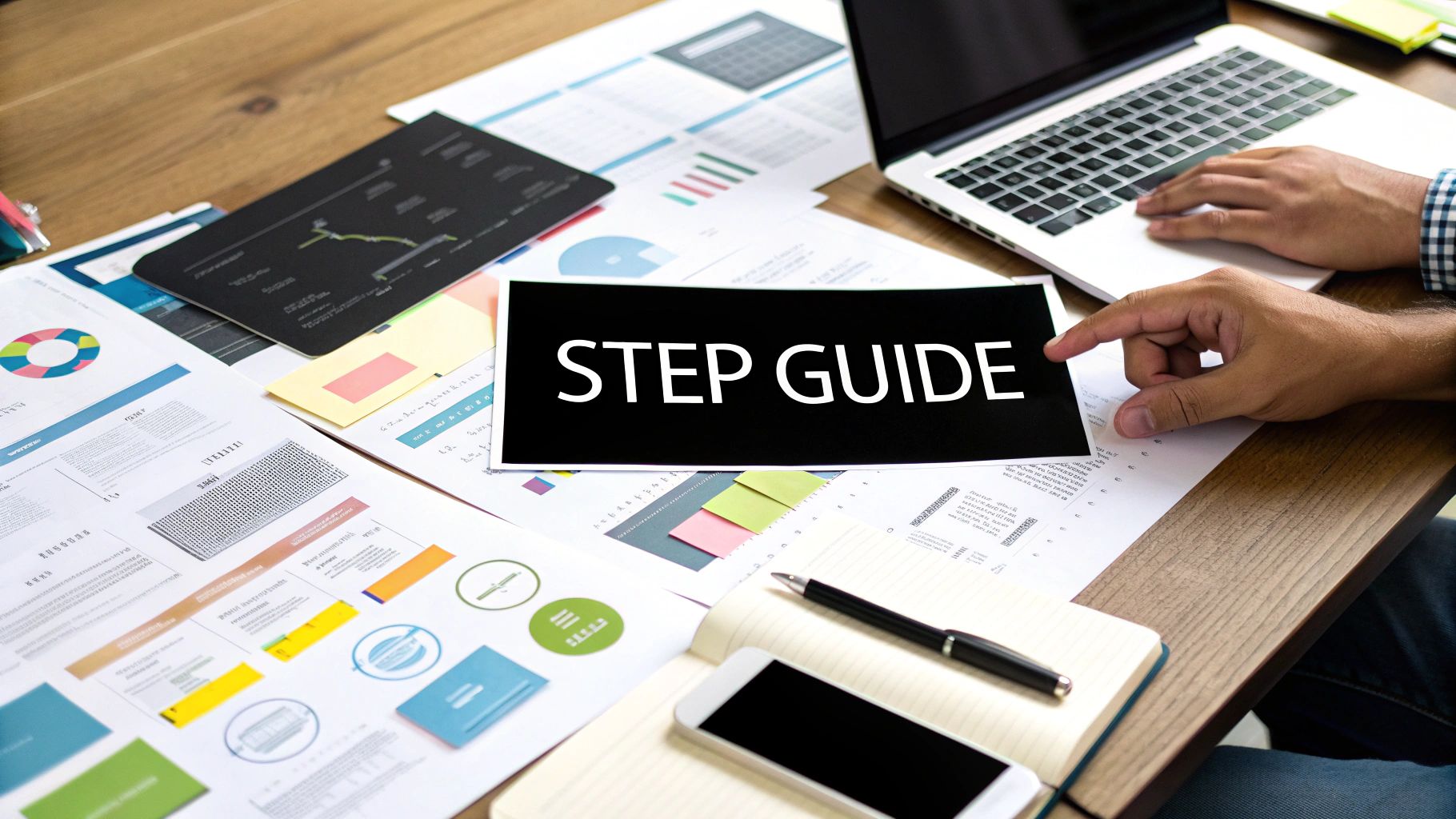
Crafting a successful LinkedIn content calendar involves understanding what truly resonates with your audience. A diverse content mix is essential. Simply posting text updates isn't enough to maximize engagement. This section explores the diverse content types that can elevate your LinkedIn presence, and we'll delve into how to create a strategy that drives meaningful engagement. For a deeper dive into content calendars, check out this helpful article: Social Media Content Calendar.
Text Posts: Foundation of Your Content Strategy
Text posts are the bedrock of any LinkedIn content strategy. They provide a simple and efficient way to share updates, pose questions, and initiate conversations. However, brevity and engagement are key to capturing attention in a fast-paced feed. Use compelling headlines and clear calls to action to encourage interaction.
Images and Videos: Enhancing Visual Appeal
Visual content is paramount for capturing attention on LinkedIn. Images and videos can dramatically increase engagement compared to text-only posts. Use high-quality visuals relevant to your industry and target audience. Videos, in particular, can be highly effective for sharing insights, demonstrating expertise, and fostering personal connections.
Articles and Documents: Diving Deep into Topics
For more in-depth analysis and thought leadership, consider publishing articles directly on LinkedIn. This format allows you to explore complex subjects and showcase your expertise. Documents, such as presentations and white papers, can also provide valuable resources for your audience. This long-form content establishes you as a knowledgeable resource in your field. For tips on crafting effective LinkedIn posts, read: How to master LinkedIn posts.
Polls and Questions: Encouraging Interaction
Polls and questions are excellent tools for encouraging interaction and gathering valuable feedback from your network. These interactive formats stimulate discussion and provide insights into your audience's opinions and preferences. They also boost visibility because LinkedIn's algorithm prioritizes content with high engagement.
Emerging Content Formats: Gaining a First-Mover Advantage
LinkedIn is constantly evolving, with new content formats regularly emerging. Staying ahead of the curve by experimenting with these formats can provide a significant first-mover advantage. These might include live video streams, audio content, or interactive quizzes.
To help visualize the effectiveness of various content types, let's examine a comparison of their performance metrics.
LinkedIn Content Types Performance Comparison
| Content Type | Average Engagement Rate | Best For | Production Effort | Longevity |
|---|---|---|---|---|
| Text Post | Low (0.5-1%) | Quick Updates, Questions | Low | Short |
| Image Post | Medium (1-2%) | Visual Storytelling, Brand Awareness | Medium | Medium |
| Video Post | High (2-3%) | Demonstrations, Thought Leadership | High | Long |
| Article | Medium (1-2%) | In-depth Analysis, Thought Leadership | High | Long |
| Document | Low (0.5-1%) | Resource Sharing, Lead Generation | Medium | Long |
| Poll | High (2-3%) | Gathering Feedback, Increasing Reach | Low | Short-Medium |
This table highlights the varying engagement rates and longevity of different content types on LinkedIn. While videos and polls generally yield higher engagement, articles and documents offer long-term value and position you as a thought leader. Text posts remain essential for quick updates and fostering conversations.
Adapting Your Content Mix: Staying Relevant
The ideal content mix depends on your specific audience, industry, and business goals. Regularly analyze your content performance to understand what resonates most effectively. This allows you to adapt your content calendar as algorithms change and your audience evolves, ensuring continued engagement and success on LinkedIn. LinkedIn presents significant opportunities for businesses, boasting over 1.2 billion members. A well-structured content calendar, tailored to audience preferences and industry trends, is crucial. Find more detailed statistics here: LinkedIn Statistics.
Timing Strategies That Maximize Content Visibility
Knowing when to post on LinkedIn is just as important as knowing what to post. This means understanding how timing nuances impact what your audience sees. Strategic scheduling, aligned with your audience's online habits, is key. Let's explore how to optimize your LinkedIn content calendar.
Understanding Peak Engagement Times
Identifying your audience's most active times is crucial. General guidelines suggest posting on weekdays—Mondays, Tuesdays, and Wednesdays—during the morning. However, these are just starting points. Your specific audience might behave differently.
For example, if your target audience is in a different time zone, their peak activity won't align with your local business hours. LinkedIn analytics can offer helpful data on your audience's online behavior. This information will refine your posting schedule for optimal reach.
Content type also matters. Light, engaging content during lunch breaks might perform well, while more in-depth articles might suit mornings or evenings. Experimentation is essential to discover what works best for your particular audience.
Consistency Versus Overwhelm: Finding the Right Balance
A consistent posting schedule is vital for a successful LinkedIn content calendar. The ideal posting frequency depends on the industry, but generally, aim for 2 to 5 posts per week to maintain engagement without overwhelming your followers. For more detailed information, check out this resource: How Often to Post on LinkedIn.
In competitive fields like marketing or technology, daily posting might be necessary. Less competitive sectors might only require a few posts per week. Timing is also key, with Mondays, Tuesdays, and Wednesdays often performing best, especially during morning hours.
Remember, quality over quantity. It's better to post less often with high-quality, engaging content than to overwhelm your audience with mediocre posts just to maintain a daily presence.
Strategic Approaches for Key Business Periods
Staying active on LinkedIn during key business periods, like product launches or industry events, can be a challenge. Plan ahead by creating content in advance and scheduling it using tools like AutoGhostwriter. This ensures consistent posting even during busy times.
During periods of increased content, diversify your formats. Instead of relying solely on text posts, incorporate images, videos, and polls to maintain audience interest and prevent content fatigue.
Debunking Scheduling Misconceptions
One misconception is that posting more frequently automatically increases visibility. This isn't true. LinkedIn's algorithm prioritizes engagement. Focus on quality content that sparks conversation and shares.
Another misconception is that the optimal posting time is universal. Your target audience dictates the best times for your content. Testing and analyzing results is key to refining your schedule and optimizing your LinkedIn content calendar for maximum visibility.
Tools That Streamline Your LinkedIn Content Production
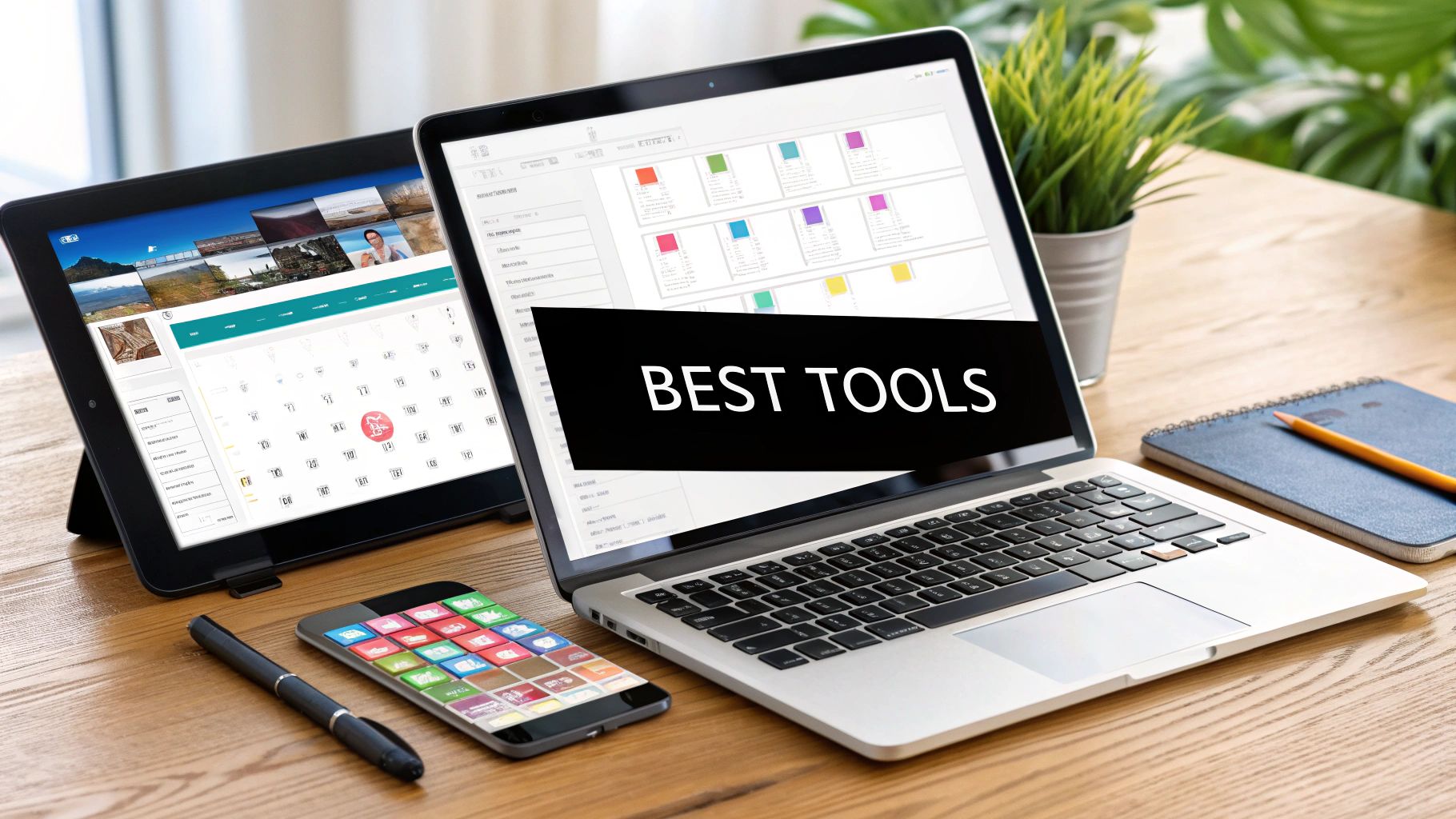
Creating high-quality content consistently for LinkedIn can be demanding. Fortunately, the right tools can save you time and significantly improve your content strategy. This section explores essential tools for managing content creation and scheduling.
Dedicated LinkedIn Tools: Streamlining Your Workflow
Several platforms focus specifically on LinkedIn content management. These tools often offer advanced scheduling, content performance analysis, and even AI-powered content generation. For example, AutoGhostwriter helps professionals create high-quality content efficiently. It uses AI to generate engaging posts and provides various templates. This focused approach streamlines creation and ensures a consistent brand voice.
Other dedicated tools often integrate directly with LinkedIn, offering seamless content scheduling and performance tracking. Some even provide competitor analysis, letting you monitor what others are posting and identify content opportunities. These platforms maximize your LinkedIn impact without requiring hours of content management.
Broader Social Media Management Platforms: Managing Multiple Channels
If you're active on multiple social media platforms, broader social media management tools can be helpful. These platforms manage your LinkedIn content alongside posts for other channels like Twitter, Facebook, and Instagram. This centralizes content scheduling across multiple platforms.
However, broader platforms may lack the specialized features of dedicated LinkedIn tools. They might not offer in-depth LinkedIn analytics or AI-powered suggestions tailored for LinkedIn's professional audience. You might need to supplement these tools with other resources to fully optimize your LinkedIn strategy.
Balancing Automation With Authenticity: Maintaining a Personal Touch
Automation tools improve efficiency, but maintaining an authentic voice on LinkedIn is essential. Over-reliance on automation can make your content feel impersonal. The key is balancing efficiency with the personal touch that LinkedIn audiences appreciate.
Think of automation tools as assistants. They handle scheduling and data analysis, freeing you to craft content that connects with your audience. The goal is to build relationships, not just broadcast messages.
Choosing the Right Tools for Your Needs: Evaluating Features and Limitations
The ideal toolset for your LinkedIn content calendar depends on your needs and goals. Consider your budget, content volume, and desired automation level.
Solopreneurs: A dedicated LinkedIn tool with AI assistance and simple scheduling might be beneficial.
Small Businesses: A broader social media management platform could manage multiple channels efficiently.
Enterprise Teams: A comprehensive solution with advanced analytics and team collaboration features may be required.
By evaluating available options and considering your requirements, you can choose the right tools to streamline LinkedIn content production and maximize your impact.
Measuring What Actually Matters in Your LinkedIn Strategy
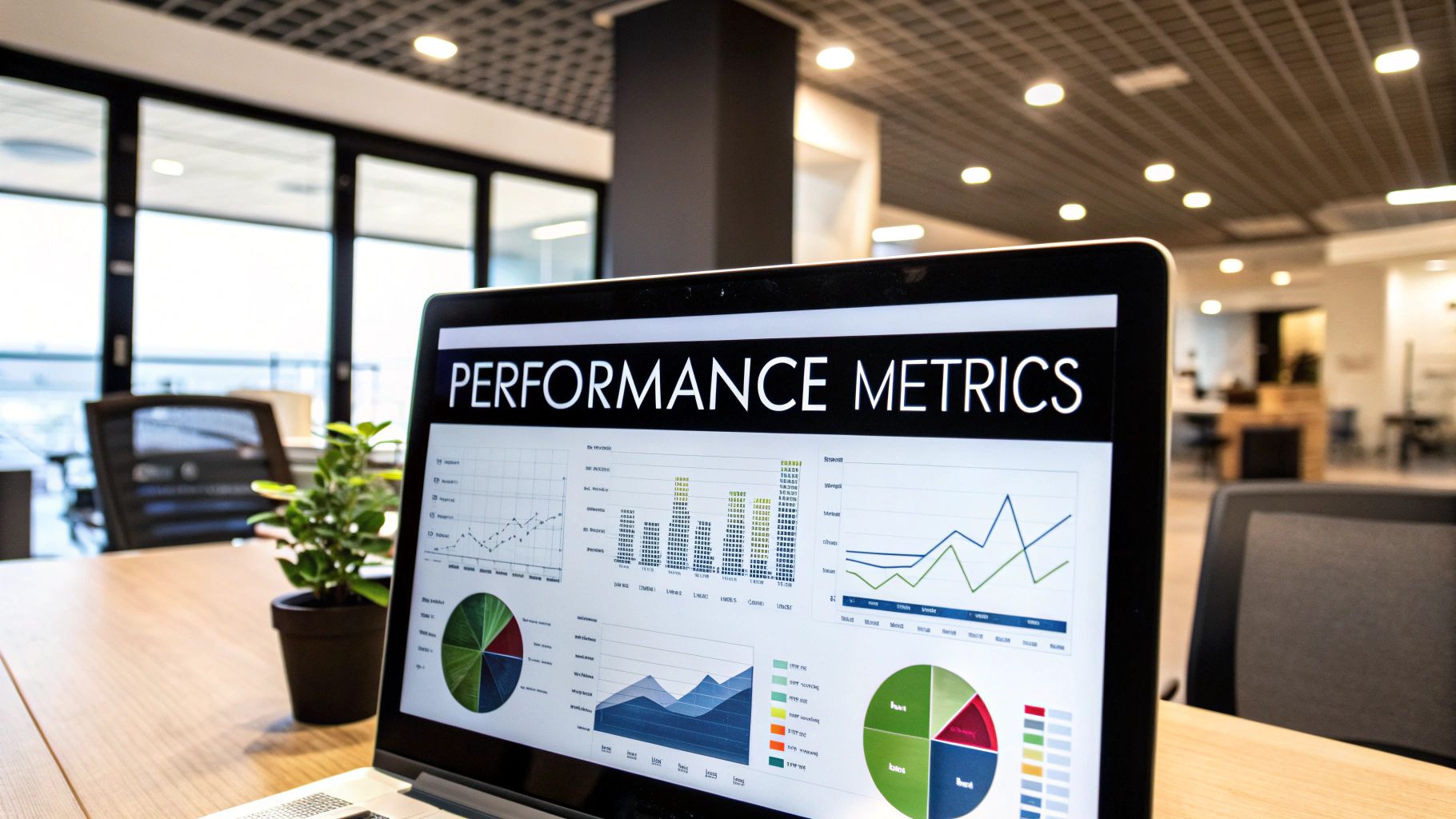
A successful LinkedIn strategy goes beyond superficial metrics like likes and shares. While vanity metrics provide a glimpse of engagement, they don't tell the whole story. To truly understand the impact of your LinkedIn content calendar, you need to measure the metrics that align with your business objectives. This section explores how to identify and track those key performance indicators.
Establishing Baseline Performance Measures
Before you can assess growth, you need a starting point. Establishing baseline metrics provides a foundation for measuring progress. This means tracking key performance indicators like engagement rate, website clicks, and lead generation before you implement your LinkedIn content calendar.
This initial data serves as a benchmark. By comparing future performance to your baseline, you gain a clear understanding of the impact of your content strategy. For example, if your initial average engagement rate is 1%, you can set a realistic goal to increase it to 2% within a defined period.
Setting Realistic Improvement Targets
Setting achievable goals is essential for staying motivated and accurately gauging success. While ambition is important, unrealistic expectations can be detrimental. Start with small, incremental improvements. For example, if lead generation is your goal, aim for a 5% increase per month.
These small wins build momentum and provide valuable data for refining your strategy. As your LinkedIn presence grows, you can gradually increase your targets, ensuring they remain attainable and aligned with your overall business objectives.
Conducting Content Audits for Actionable Insights
Regular content audits are invaluable for understanding what resonates with your audience and what falls flat. This involves analyzing your past LinkedIn content to identify trends and patterns.
Ask yourself key questions. Which posts generated the most engagement? What content formats performed best? Which topics sparked the most discussion? These insights will inform your future content creation, allowing you to focus on what drives results. This data-driven approach keeps your LinkedIn content calendar relevant and effective.
Adapting to Algorithm Changes and Evolving Goals
The LinkedIn algorithm is in constant flux. What worked yesterday might not work tomorrow. Successful LinkedIn strategists embrace adaptability. They stay informed about algorithm updates and adjust their content calendar accordingly.
Also, as your business evolves, so too will your goals. Your LinkedIn content calendar should reflect these changes. This might involve shifting your focus from brand awareness to lead generation, or from networking to thought leadership. Flexibility is key to long-term success.
Measuring Hard-to-Quantify Benefits
While metrics like engagement and website clicks are important, some benefits of a LinkedIn content calendar are less tangible. These include relationship development and establishing professional authority.
Although these benefits might not be immediately measurable, they contribute significantly to long-term success on LinkedIn. Building strong relationships can lead to valuable connections, partnerships, and career opportunities. Establishing yourself as a thought leader can enhance your credibility and attract new clients. By focusing on building relationships and sharing valuable insights, you can cultivate these hard-to-quantify benefits.
Ready to elevate your LinkedIn presence and achieve meaningful results? autoghostwriter empowers you to create engaging, high-quality content that captures attention and drives real engagement. With AI-powered tools and proven templates, autoghostwriter streamlines your content creation process, freeing you to focus on building relationships and achieving your business objectives. Visit autoghostwriter.com today and unlock the full potential of your LinkedIn content.